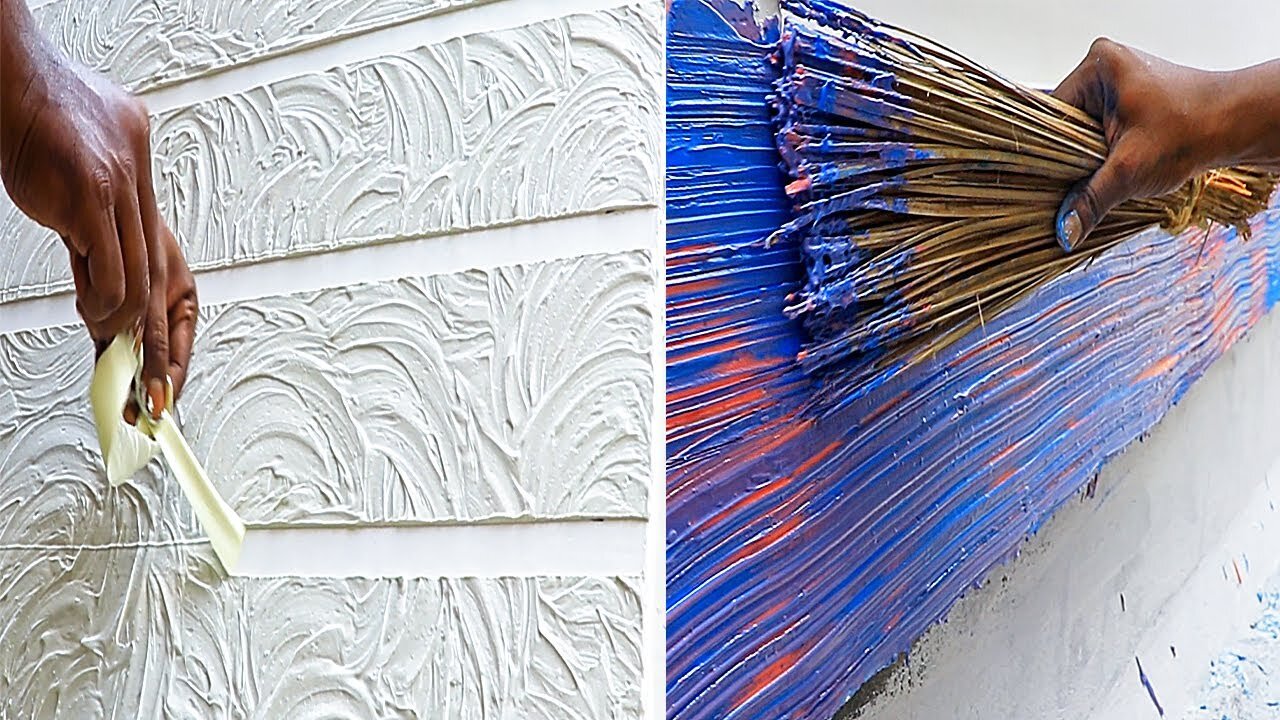Premium Only Content

8 new wall putty texture designs techniques and ideas
Minerals and high-quality polymer make wall putty, which is white cement. In addition to rendered walls and precast walls, wall putty can be applied on lightweight blocks, concrete, etc. Use it on walls that have been damaged or have tiny holes in them. The wall putty provides a flawless finish. When it comes to painting, it’s done before the last coat of primer has dried.
There are two varieties of wall putty: acrylic wall putty and cement-based wall putty. Acrylic wall putty is the more common form. Acrylic wall putty is available in the form of a paste, and it can be applied directly to the wall surface. These are mainly intended for usage on interior walls. Cement-based putty, on the other hand, is offered in powder form, which must be combined with water before being applied. Presently, cement-based putty is the most extensively used kind of putty.
Acrylic Putty
It is a water-based acrylic putty specifically designed for use on interior walls. Compared to POP, this form of putty has a smooth texture and long-lasting qualities that make it a suitable choice. Acrylic putty is distinguished by its high quality, which results in a smooth and stunning finish on the walls. It also aids in the sealing of cracks and other irregularities in the wall.
White Cement Putty
It is a polymer-based putty that is one of the most widely used varieties of wall putty in residential construction today. The putty is made up of polymers, white cement, and minerals, making it suitable for use on both interior and exterior walls. Known for delivering an excellent finish to the walls, this putty is known for its shiny and smooth appearance. White cement wall putty has a high bonding strength and is easy to apply.
Disadvantages of using wall putty
Because the putty dries quickly, it should only be applied to the walls by an inexperienced painter.
After the putty has been applied, it is tough to scoop it off the surface.
You will not be able to tweak or replace the wall putty after it has hardened.
Preparing the putty with a mechanical stirrer is essential since it dries fast. Your hands and other tools will not be able to complete the task.
Wall putty includes potentially toxic substances like formaldehyde, which may cause skin rashes in sensitive individuals.
You may find it challenging to avoid cracks when applying wall putty to a broad surface area.
-
 1:51:12
1:51:12
Tate Speech by Andrew Tate
13 hours agoEMERGENCY MEETING EPISODE 105 - UNBURDENED
197K102 -
 1:01:18
1:01:18
Tactical Advisor
15 hours agoBuilding a 308 AR10 Live! | Vault Room Live Stream 016
172K19 -
 2:17:02
2:17:02
Tundra Tactical
1 day ago $28.98 earnedTundra Nation Live : Shawn Of S2 Armament Joins The Boys
267K28 -
 23:22
23:22
MYLUNCHBREAK CHANNEL PAGE
2 days agoUnder The Necropolis - Pt 5
210K71 -
 54:05
54:05
TheGetCanceledPodcast
1 day ago $14.91 earnedThe GCP Ep.11 | Smack White Talks Smack DVD Vs WorldStar, Battle Rap, Universal Hood Pass & More...
202K35 -
 8:30
8:30
Game On!
20 hours ago $0.91 earnedLakers BLOCKBUSTER trade! Luka Doncic is coming to LA!
32.3K4 -
 48:29
48:29
hickok45
1 day agoSunday Shoot-a-Round # 266
30.7K10 -
 15:18
15:18
SternAmerican
3 days agoStern American with Sam Anthony from YourNews.com
21.3K1 -
 1:03:13
1:03:13
PMG
1 day ago $1.97 earnedRFK, Tulsi & Kash Hearings, the Plane Crash in the Potomic, & Ozempic
19.2K3 -
 11:33
11:33
DeVory Darkins
1 day ago $23.60 earnedJustin Trudeau PANICS after Trump slaps Canada with AGGRESSIVE Tariffs
120K273